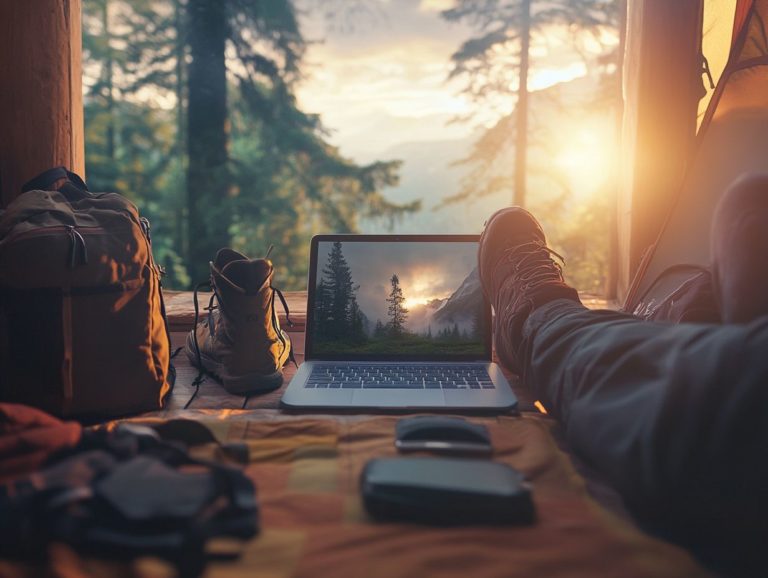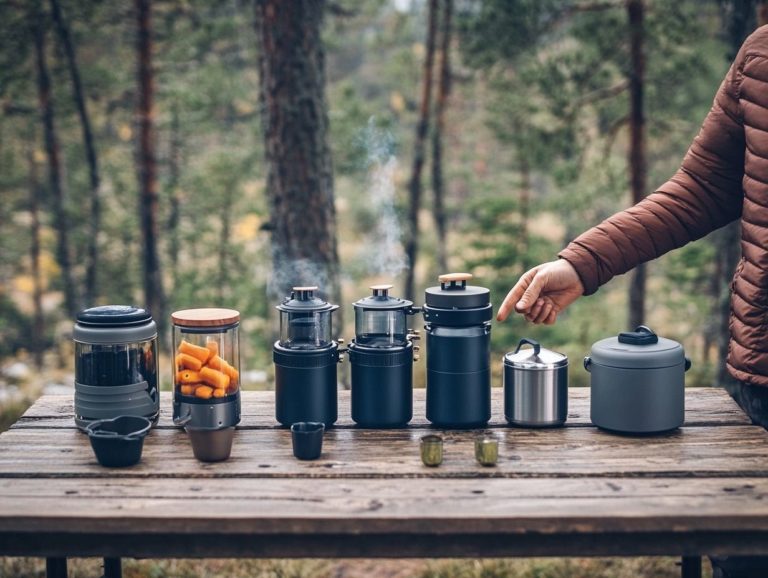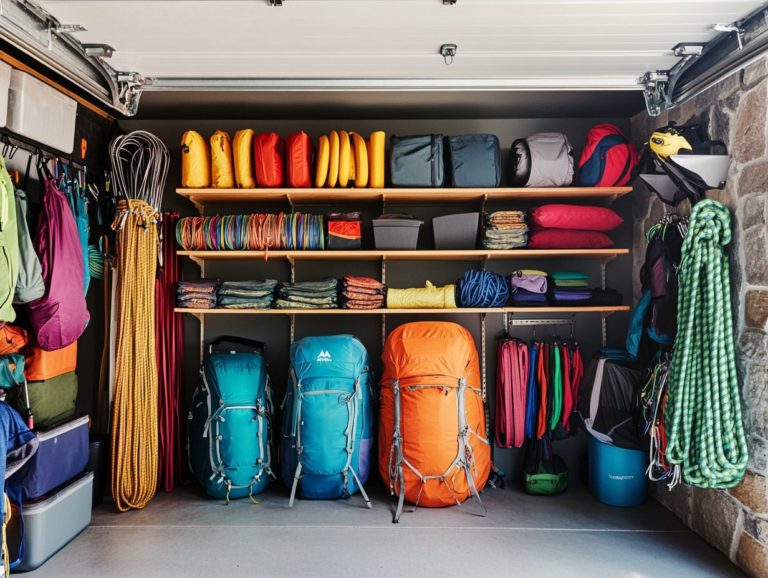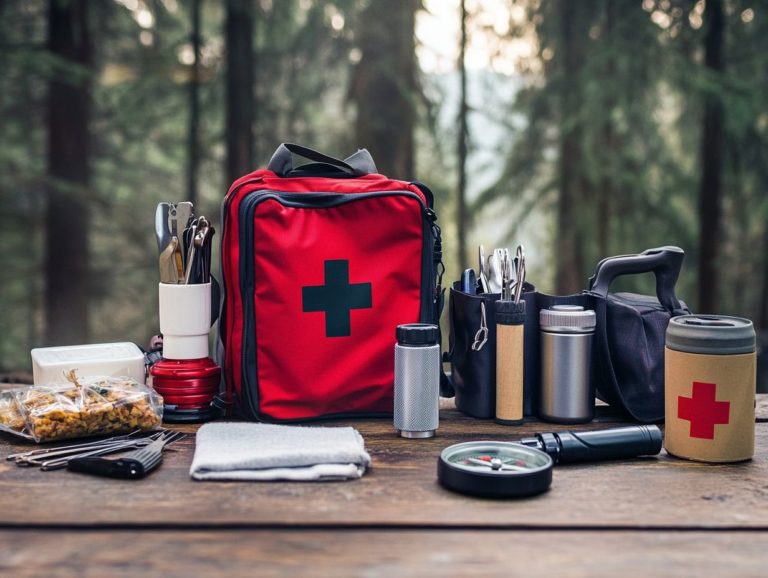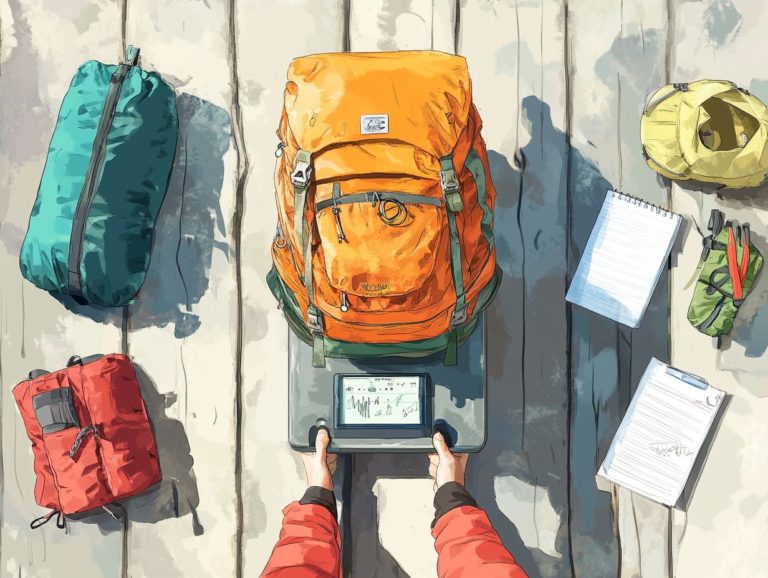How to Use Navigation Apps for Hiking?
In today s digital landscape, navigation apps have revolutionized how you explore the great outdoors. For hikers like yourself, these tools not only enhance safety but also provide a level of convenience that lets you immerse yourself in the stunning beauty around you.
As you prepare for your next adventure, selecting the right navigation app becomes crucial. This piece will delve into the benefits of these apps, highlight key features to seek out, and offer practical tips for maximizing their utility while hiking.
Get excited to take your hiking adventures to the next level!
Contents
Key Takeaways:
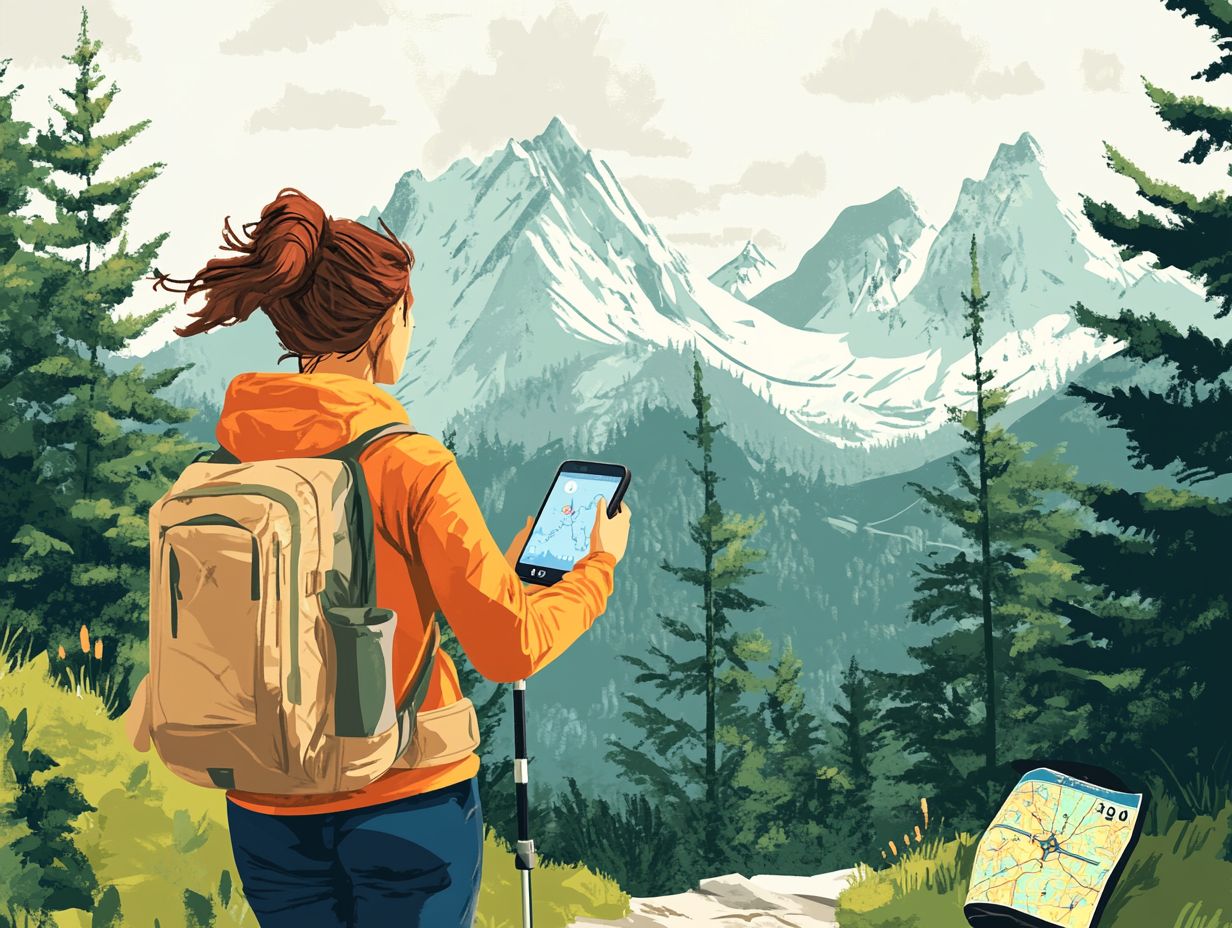
- Stay safe and track your route with navigation apps for hiking they offer better safety and convenience, making your hiking experience more enjoyable.
- Choose your ideal navigation app by considering factors such as offline maps, GPS accuracy, and user reviews.
- Maximize your navigation app by getting familiar with essential features, following a step-by-step guide, and incorporating tips from experienced hikers.
Navigation apps serve as your ultimate companions for outdoor activities like hiking and backpacking. They are packed with advanced features such as offline maps and route planning to elevate your experience in nature. These applications have gained immense popularity among outdoor enthusiasts, particularly within the hiking community, where they enable you to tackle challenging terrains with confidence.
Among the myriad of options available, apps like ViewRanger, Gaia GPS, and FATMAP truly shine with their unique features tailored specifically for hikers. For example, they often support GPX import/export, allowing you to easily upload and share routes. This capability is especially beneficial for planning intricate hikes or connecting with fellow adventurers. Additionally, consider exploring must-have navigation tools for hikers to enhance your outdoor experience.
Many of these apps also offer offline access, ensuring your safety in areas where cell service is unreliable, while providing live location tracking and comprehensive terrain information. By incorporating these powerful tools into your outdoor toolkit, you can navigate with greater ease and significantly reduce the risks associated with exploring unfamiliar landscapes.
The advantages of utilizing navigation apps for hiking are remarkable, offering a range of benefits from better safety and convenience to superior navigation and access to international maps. These apps are essential tools for outdoor enthusiasts like you.
With features such as track recording and offline capabilities, you can confidently venture into remote areas, significantly reducing the chances of getting lost or encountering unforeseen challenges.
Enhanced Safety and Convenience
Enhanced safety and convenience are key benefits of using smartphone navigation apps during your hiking adventures. These apps enable you to navigate unfamiliar trails with confidence. With features like offline maps and real-time data, they become essential tools for both novice and seasoned hikers.
Among these technologies, location tracking is crucial for enhancing your safety. For example, apps like OS Locate offer precise GPS positioning, enabling you to pinpoint your location even in remote areas.
The OS Maps application is particularly valuable, providing essential alerts about changing weather conditions and helping you steer clear of potential hazards. By integrating these features, you can plan your routes more effectively and adjust your journey based on real-time information, transforming outdoor excursions into not only safer experiences but also far more enjoyable ones.

When selecting the ideal navigation app for hiking, consider several key factors to ensure the application aligns perfectly with your outdoor pursuits. Take a moment to assess the app’s user interface and evaluate essential features such as GPX import/export and offline maps.
By making an informed choice, you can significantly elevate your hiking experience, whether you’re traversing the majestic trails of the Canadian Rockies or exploring the rugged beauty of Scotland.
Factors to Consider
When you’re selecting a navigation app for your hiking adventures, several key factors come into play. It’s essential to consider the app’s user interface, feature set, and compatibility with international maps.
Understanding these elements will help you choose the perfect tool to enhance your outdoor experience.
User reviews often praise the reliability and accuracy of popular apps like FATMAP and OpenStreetMap. These choices have become favorites among outdoor enthusiasts.
The ability to access offline maps is crucial, ensuring you won t find yourself lost in remote areas. Features like trail recommendations and altitude tracking significantly enhance your journey.
Compatibility with various devices, including smartphones and tablets, can also sway your decision. Seamless integration with wearable technologies offers enhanced navigation capabilities that can make all the difference.
By keeping these criteria in mind, you can select an app that boosts your confidence while you explore the great outdoors.
When you’re evaluating navigation apps, pinpoint features tailored for hiking and outdoor adventures to ensure the app truly supports your journey.
Look for essential functions like offline topographical mapping, GPX (a file format for storing GPS data) import/export capabilities, and the option to set waypoints.
These functionalities can greatly elevate your hiking experience, making navigation not just easier but also more dependable.
Essential Functions for Hiking
Essential functions for your hiking experience in navigation apps include offline mapping capabilities, the ability to create and follow waypoints, and robust track recording features that allow you to document your outdoor adventures.
These features make navigation easier and your hiking experience more enjoyable, providing you with valuable tools to explore and chronicle your journey.
For instance, offline mapping is invaluable in remote areas where cell service may vanish. Preloading OS Maps ensures you re always in touch with your routes.
You ll love the waypoints feature! It effortlessly marks points of interest, like scenic viewpoints or water sources, making it easy to revisit them later.
Meanwhile, track recording helps you maintain a log of your hikes and enables you to share experiences with the hiking community, inspiring others to explore similar trails.
These features collectively foster a sense of adventure and a deeper connection to nature.
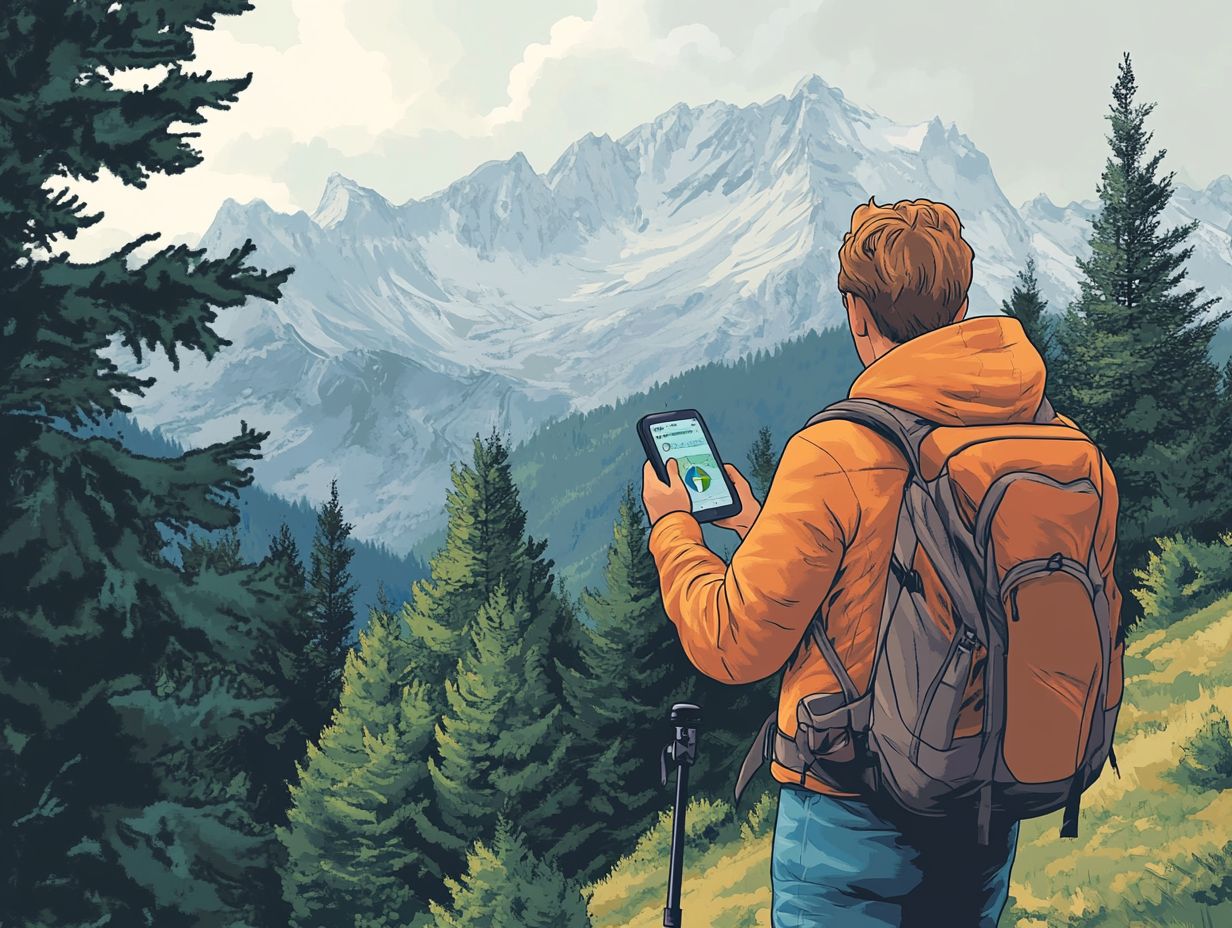
Using navigation apps for hiking can elevate your outdoor adventures to new heights when utilized effectively. This comprehensive guide will take you through the essential steps for successful route planning and navigation.
From downloading the app to setting waypoints and tracking your progress, mastering these skills will enable you to safely explore even the most remote trails.
Step-by-Step Guide
This step-by-step guide enables you to make the most of navigation apps for hiking, fully utilizing their features to elevate your outdoor adventures.
-
Start by downloading reputable navigation apps like FATMAP or OS Locate, specifically designed for outdoor enthusiasts, featuring user-friendly interfaces.
-
Once you ve installed the app, open it and select your desired hiking area. You can easily search for popular trails or enter specific locations to get started.
-
Next, take advantage of the route suggestions. Remember to set waypoints for points of interest or rest breaks. If you anticipate poor cellular reception, don t forget to download offline maps ahead of time; they can truly be lifesavers in remote areas.
Start planning your next hiking adventure today with these amazing navigation apps!
To truly maximize your experience with navigation apps while hiking, it’s essential to adopt best practices and expert tips that enhance your safety and enjoyment in the great outdoors.
Embrace features like offline maps and tracking tools. These can significantly elevate your hiking adventures and grant you the confidence to explore, alleviating worries about losing your way.
Best Practices and Pro Tips
Using best practices and expert tips with navigation apps can significantly enhance your hiking experience, improving both safety and efficiency. Features like offline maps and route planning help you confidently tackle challenging terrains.
Regularly updating your maps is crucial since outdated data can mislead you and throw your planned route off course. Familiarizing yourself with the app’s tools, like marking important locations and tracking your path in real-time, will boost your adventurous spirit even more.
Taking a moment to check reviews and specific trail details can give you valuable insights into current conditions, helping you make informed decisions. Enabling alerts for weather changes can help you adjust your plans quickly, creating a safer and more thrilling hiking experience!
Frequently Asked Questions
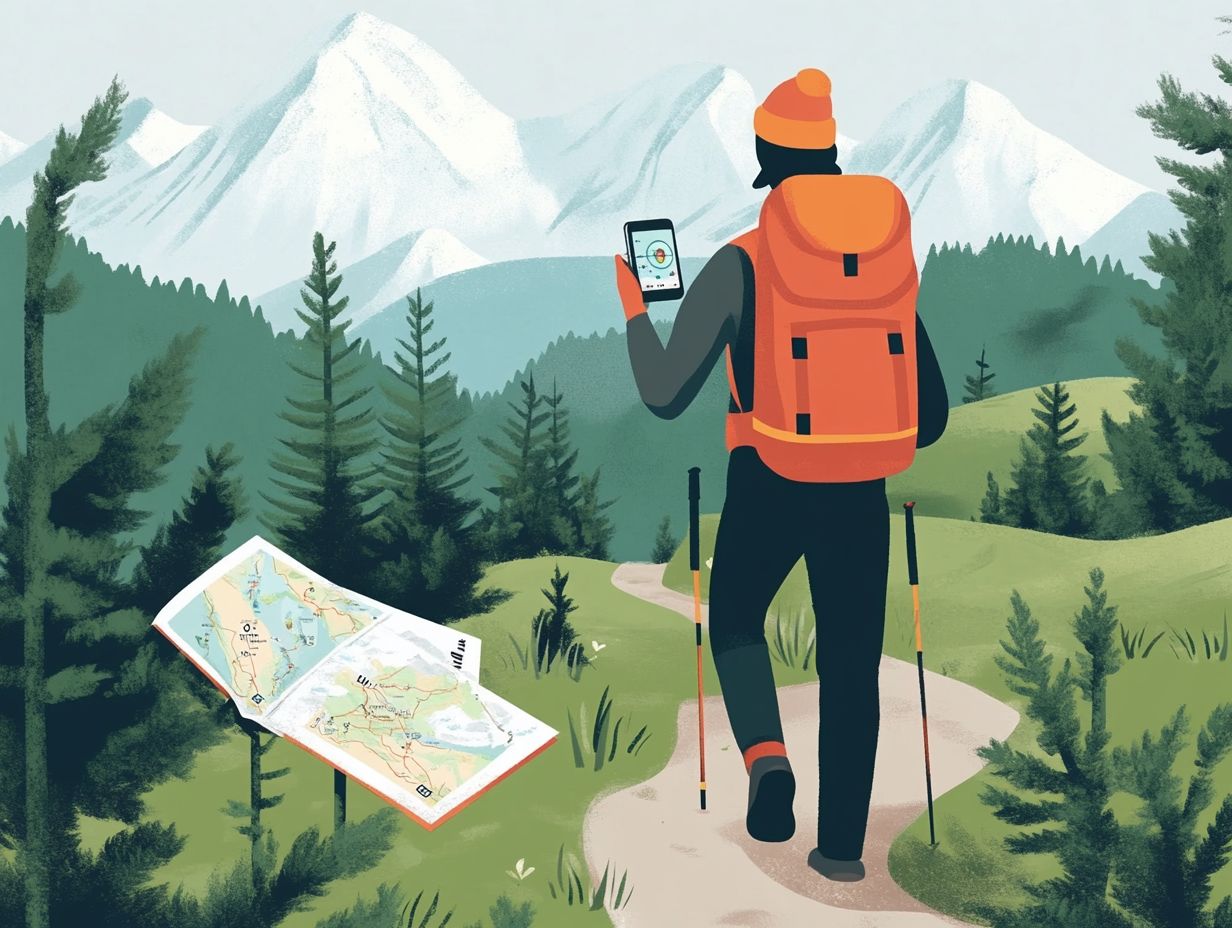
Navigation apps help hikers plan and navigate their routes using GPS. These apps provide maps, directions, and points of interest along the hike.
You can access navigation apps through your smartphone or tablet. Download them from app stores like the Apple App Store or Google Play Store. They require an internet connection and GPS signal to function properly.
Yes, many free navigation apps for hiking are available. Popular options include AllTrails, ViewRanger, and Gaia GPS. These apps offer basic features and can be upgraded for additional functionality.
Yes, some navigation apps offer offline functionality. This allows hikers to access maps and directions without an internet connection. However, it’s important to download the necessary maps and data beforehand.
Yes, using navigation apps can drain your device s battery since they rely on GPS and internet connectivity. It’s recommended to start with a fully charged phone and bring a portable charger on hikes.
Navigation apps can be reliable, but technology can fail. Always carry a paper map and compass as a backup, and have a general understanding of your route before relying solely on an app.
Consider downloading a navigation app today to enhance your hiking adventures!

